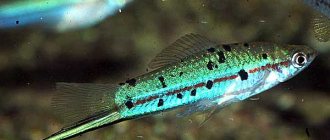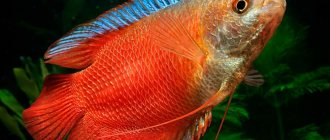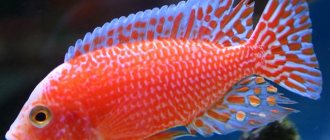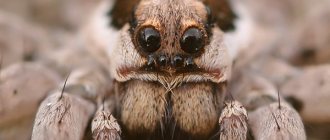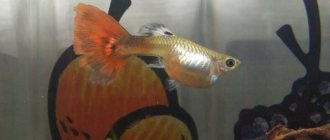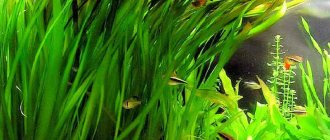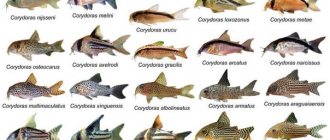author: fisher 01/21/2016 0 Comments
Family: Chain catfish
soms
Otocinclus affinis or common otocinclus is perhaps the smallest representative of the chain catfish family (Loricariidae). Even in nature, their size rarely exceeds 5 cm. Their habitat is limited to water bodies in the southeastern part of Brazil. Typical biotopes are shallow, slow-flowing rivers, lakes and ponds, with clear, clean water, densely overgrown with aquatic vegetation. In the Amazon basin, there are about 20 species of otocinclus, differing in size, color and pattern on the body. They are all suitable for keeping in an aquarium.
Otocinclus affinis
Otocinclus affinis is most often found in amateur aquariums. It has an elongated body, flattened on the abdominal side, covered with wide bony plates. The main body color is silver, with a slight yellowish tint. On the dark gray back there are light stains and small specks of brown. The abdomen is characterized by a yellowish tint. A wide dark stripe runs along the entire body. Transparent fins have a barely noticeable green tint. The eyes of Otocinclus are relatively large, and the mouth is a suction cup characteristic of the entire family.
In an aquarium, Otocinclus affinis reaches a size of 3–4 cm.
Sometimes they rise to the surface of the water and take a breath of air. This is normal behavior. Like most chain-mailed catfish, otocinclus have intestinal respiration, which allows them, with a deficiency of oxygen dissolved in water, to breathe atmospheric air.
Sexual dimorphism in the species is weakly expressed. But if you look closely, females can still be distinguished; they are somewhat larger and plumper than males.
Otocinclus spend most of their time on the wide leaves of plants, cleaning them from algae and microorganisms living on them.
Despite its modest size, this fish, hardly noticeable in the aquarium, is, along with the Siamese algae eater, one of the most effective algae eaters.
Otocinclus affinis is the most common inhabitant in all types of planted aquariums. This species is highly recommended for keeping in natural aquariums by Takashi Amano. They are much more mobile than ancistrus and, unlike them, they clean not only hard surfaces, but also plant leaves from algae.
Compared to other species, otocinclus more effectively fight algal growth, and they do this almost around the clock, without damaging even the most delicate plant leaves. Due to this feature and small size, many aquarists prefer otocinclus over Siamese algae eaters.
Otocinclus affinis cleans well the leaves of even such miniature plants as Echinodorus tenellus and Saggitaria subulata. Prevents and clears red algae from Anubias. In two days, a flock of otocinclus can completely clear an aquarium of brown diatoms (brown algae).
Habitat in nature
Argentina and Venezuela are considered to be the birthplace of Otocinclus catfish. Some varieties of fish can be found in Brazil, Paraguay and Peru. Catfish can also be found in the Orinoco Basin and the upper Amazon.
Otocinclus inhabit small streams and clear rivers with gentle currents, where they eat algae and fouling at the bottom of watercourses. Catfish can usually be seen off the coast, where they hide in small-leaved plants. With the help of suction cups they cling to broad-leaved thickets, stones and other underwater objects.
Otocinclus live in flocks of several thousand individuals. Flocks graze in sandy shallow waters, where there are many plants and snags. Catfish feed on periphyton and algae.
These fish live in schools
Reproduction and lifespan
It is not difficult to determine the gender of otocinclus - females, as a rule, are longer and thicker. In an aquarium, these catfish reproduce very successfully, since no special conditions are required for their breeding. A good incentive to start spawning is to change the water to fresh water.
The courtship period is characterized by peculiar mating games and skirmishes between males. For successful spawning, it is better to plant a whole flock of otocinclus together, then they themselves will split into pairs.
When the choice is made, the female presses her head against the male's stomach, forming the letter "T", this stimulates milk production. Fertilized eggs are glued to a previously cleaned secluded place, where they will mature for 2-7 days. The clutch consists of 100-150 small translucent eggs.
2-3 days after maturation, fully formed fry hatch, which must be kept in a low container (below 20 cm) and fed with microworms, egg yolk, and spirulina. The fry become sexually mature at 7 months of age; if properly kept in captivity, otocinclus catfish live 5-6 years.
Description of cleaner fish
Otocinclus is a prime example of an aquarium cleaner. The length of its body is 5-5.5 cm. The shape of the fish’s body is similar to a spindle. Otocinclus is also called the chain catfish or loricariid catfish. The armor of the ancient Romans was called lorica, so the fish was so named because of its body covered with protective bone plates.
Cleaner catfish have an interesting color. Their lateral plates have a gray-yellow tint, and their back is covered with a dark color. The vulnerable abdomen, milky gray in color, is devoid of plates. There is a dark stripe along the sides of the body, turning into a spot at the tail, which may differ in shape and size among different species. Small fins are characterized by transparency.
Males are very different from females
An interesting feature of otocinclus is intestinal respiration. Catfish have an air bladder, with which they inflate their esophagus and float to the surface. When there is a lack of gill respiration, the catfish often rises to breathe. This serves as a signal that the water is poorly saturated with oxygen.
Even beginners can determine the sex of cleaner fish. Just look at the fish from above: males are small in size and graceful in shape, while females are larger, wider and rounder. It is quite easy to determine the gender of aquarium pets, but experts recommend keeping a flock if you plan to breed otocinclus. After some time, the catfish themselves split into pairs.
Small cleaners try to stay in thickets, on the walls of the aquarium and on stones, on which they scrape off various foulings with the help of their suction cup mouth. Catfish have small teeth, so they do not damage plants.
In this video you will learn more about otocinclus:
Breeding
Fish are independent not only in nutrition, but also in reproduction. Some breeders celebrate replenishment without any action on their part. During spawning, Oto catfish hide their eggs on the leaves of plants and thus protect their offspring from voracious neighbors. The fry also prefer to spend time in the thickets, where adults cannot reach them.
If the goal is to breed Otocinclus, then you need to prepare a small-capacity spawning aquarium (30-60 l). No soil is used, the bottom is covered with small-leaved mosses, for example, Javanese. To purify the liquid, you can use a sponge filter; the same system is suitable for aeration.
To prepare pets for spawning, the diet includes protein foods, bloodworms, tubifex, and water changes are performed more often.
A female and 3 males are placed in a prepared container. When male individuals begin to pursue female ones, spawning has begun and will last 5-6 hours.
During the game, the fish periodically press their anal fins. At such moments, eggs are spawned, which are immediately fertilized by the father. The female reproduces 60-80 pieces per spawning. Small yellowish caviar sticks to the walls of the container, to the leaves, and settles on the moss.
Once the process is completed, the adults are removed. In the spawning tank, the water level is lowered to 5 cm, the temperature is increased to +26 °C. To prevent young animals from being affected by fungal diseases, methylene blue is added to the liquid. Its color should be bluish. Replacements are made twice a day, maintaining the concentration of the drug.
After a few days, the babies appear, at first they feed from the yolk sac, then they begin to be fed. First, live dust and special microfeeds, then gradually increase the size of the nutritional compositions.
The spawning tank is cleaned every day, any remaining food is removed from the bottom, and the water is changed. After a month, the fry have grown so much that they can be transferred to the general pool.
Varieties for the aquarium
There are about 18 species of loricariid catfish, but only a few of them are purchased for the aquarium. There are very few differences between the Otocinclus species. They differ only in slight variations in color and size. Most often, aquarists choose the following types of chain-mail catfish:
- Affinis, or common otocinclus (Otocinclus affinis). Aquarists purchase these cleaners quite often. The body of catfish reaches a length of 3-4 cm. The species is distinguished by its silvery-yellowish color and the presence of a brown stripe on the sides. The grey-beige back has brown speckling and light marbled spots. The transparent fins have a greenish tint.
- Speckled (Otocinclus flexilis). The body of the catfish is characterized by an olive-gray or gray-yellow color. There are numerous dark spots on the back. The fish has intermittent lateral stripes.
- Arnoldi (Otocinclus arnoldi). Inexperienced aquarists often confuse this species with affinis. Arnoldi is distinguished by dark brown spots.
- Maria (Otocinclus mariae). Individuals of the smallest species grow no more than 2 cm in length. They are purchased only for small tanks.
All types of otocinclus get along well in an aquarium and are able to clean the aquatic environment well. Although there is a clear species classification of these catfish , it will be difficult for a beginner to decide on the choice of a future pet. Professionals recommend purchasing catfish of the affinis variety. You can buy fish at any specialized store. The price for one som varies between 200-300 rubles.
https://youtube.com/watch?v=jVqV9HoWUcQ
Conditions of detention
Even a beginner can keep Otocinclus affinis and other species of chain catfish. But only if the necessary conditions are created will catfish feel comfortable in a closed artificial reservoir. Recommendations for keeping otocinclus:
- Since catfish live in schools, they require a large aquarium with a volume of 70 liters or more. Such conditions are acceptable for a group of 6-8 fish. It is best to choose rectangular containers that have a wide bottom.
- The aquarium should be filled with algae, shady plants, rocks and driftwood.
- The water temperature maintained by the heater should be between +22 °C and +28 °C. At elevated levels, the fish can get sick and even die, so you need to regularly check the temperature.
- Otocinclus live in dim lighting, which can be easily achieved using a fluorescent lamp.
- It will be necessary to take care of good aeration and filtration of water. You can avoid the negative reaction of underwater inhabitants to dirt and standing water by using mechanical filters and aerators that provide a slow flow.
Some people think that otocinclus are able to maintain the purity of the entire aquatic environment on their own, but this is not so. The water should be changed every 1-2 weeks. Only a third of the total volume can be updated.
Adviсe
- Adaptation, acclimatization and other adaptation processes of catfish will be accelerated if they are placed inside an aquarium in a transparent, insulated tank for a couple of weeks to allow them to get used to their neighbors.
- Any sudden change in the composition of the water can kill the fish. We are talking about sudden temperature changes, as well as a sudden increase or decrease in nitrogen concentration. Even if the parameters are not lethal for catfish, a sudden change in conditions is destructive for them. The transition to new water should be made only gradually and in case of emergency.
- Sometimes a small change in diet will restore the fish's lost appetite. According to the observations of many otocinclus lovers, zucchini is such a stimulant.
- If, on the contrary, the catfish is so hungry that it begins to nibble on aquatic plants, which it usually does not do, then it does not have enough algal food. A good way to provide your pets with their favorite algae and microorganisms is to keep a separate tank of water in the sun, which must be added to the aquarium periodically.
- Otocinclus have spines on their fins, so it is better not to pick them up. In addition, you yourself can damage a small, delicate fish with your hands. If you need to catch, use only a net or fine mesh.
Previous
Pisces Iriaterina Werner: a southern beauty with a gentle disposition
Next
Marine aquariumContent and types of aquarium moray eels
Compatibility with other inhabitants
Chain catfish are shy, but they are quite friendly towards most other inhabitants of the aquarium. During the daytime, they hide among the thickets and behind stones, and in the evening they begin to actively clean their home.
They usually stay in the depths of the tank, where they easily find and eat the formed fouling. When catfish sense danger, they quickly swim away for cover. The following can be selected as neighbors for otocinclus:
- guppy;
- analysis;
- red neon;
- thornetium;
- minors
Minors are perfect as neighbors.
It is not advisable to plant catfish with Ancistrus and Hyrinucheilus. Catfish eat the same food with them, which often leads to starvation of one of these species. Also, you should not add otocinclus to cichlids, which see small catfish as food. Loricariid fish should not be made neighbors for angelfish, from which they eat the mucus. Algae eaters constantly fight for territory with the two-colored labeo, and they bite off the lateral fins and tails of veiled individuals.
Cleaners can contract infections and various diseases from some types of fish. Before buying several types of fish, you need to consult with the seller, who will suggest suitable neighbors for catfish.
Feeding
Despite the fact that cleaners are constantly busy eating plaque, their diet needs to be expanded. A balanced diet includes feeding protein and plant foods. Special food for aquarium catfish allows you to replenish missing elements, enhance color, and increase resistance to disease. You can offer otocinclus scalded lettuce leaves or cucumbers as a treat. Residues of this type of food must be removed from the water.
An important nuance: in a recently launched aquarium there is practically no plaque on the walls. Under these conditions, the fish will starve if it is not fed additionally. Therefore, you should not rely on the fish to get its own food. For her, algae is more of a delicacy than a main source of food. Otocinclus do not suffer from overeating, and with a full diet they do not neglect their responsibility to clean the tank.
Diet of catfish
Otocinclus constantly collect food for themselves using their oral sucker. In an aquarium, cleaners feed on microalgae and zooplankton, so cleaning the tank should not be done with chemicals that kill small organisms.
Since there is little necessary food for catfish in a container with renewed water, it is necessary to purchase additional complementary food for them. The fish can be fed with vegetable scraps and bread. Catfish especially love cucumbers , zucchini, zucchini and spinach. The products must first be soaked in clean water and only then immersed in the aquarium. Food that remains uneaten must be removed after 1-2 days so that it does not pollute the aquatic environment.
Otocinclus will happily eat dry plant food. Food rich in proteins is given to fish during the spawning period.
Catfish love cucumbers
Diseases
Catfish are not susceptible to any specific diseases, but can suffer from some of the parasitic, bacterial and fungal problems that are common among freshwater fish.
By observing your fish, you can quickly detect disease. Loss of appetite, lack of activity and increased breathing are all signs of the disease. Look for discoloration, spots, and wounds.
The two most common causes of illness are:
- unclean aquarium;
- bad diet.
If you detect a disease, check the tank parameters. This includes temperature, pH, ammonia, nitrites and nitrates. You can then correct settings that have changed for any reason. It is better to disinfect water with methylene blue or potassium permanganate. The latter is recommended to treat plants before placing them in an aquarium with catfish.
Also think about what you feed your fish. Remove any foods from your diet that may not be nutritious.
Expert opinion
Sergeev A.N.
Aquarist with 17 years of experience. An employee of an aquatic center where about 100 species of fish live.
It is best to quarantine sick fish in a separate tank to protect the rest of the school.
Bacterial diseases are often treated with Tetra LifeGuard and JBL ektol fluid according to the accompanying instructions.

